Ephemera and Exhibition Culture in Cornwall and Beyond
Luisa Hahn is currently studying for a Masters degree in History of Art at the University of Glasgow. As part of a placement for her degree course, Luisa has been cataloguing the exhibition ephemera collected by Wilhelmina Barns-Graham over the many decades of her life and career in Cornwall and Scotland.
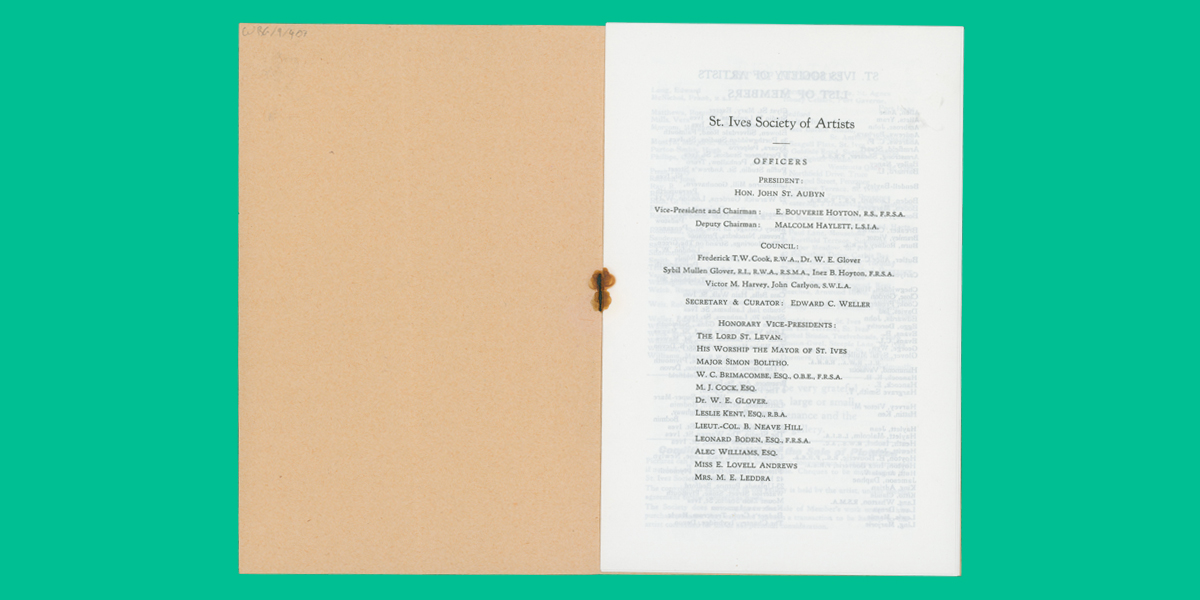
A St Ives Society of Artists Catalogue
Wilhelmina Barns-Grahams’ collection of flyers, catalogues, and Private View invitations to exhibitions by other artists may get less attention compared to other parts of the Trust’s collection, such as Willie’s paintings, prints, sketchbooks, letters, or diaries. However, upon taking a closer look at the estimated 5000 items from galleries all over the UK and Europe spanning from the early 1940s to the 2000s, it quickly becomes clear that this collection can provide useful insights not just into Willie’s engagement with the work of her contemporaries but also on 20th century exhibition culture in St Ives and beyond. Additionally, since the collection consists of items of artists other than Willie, it is a research resource on artists and galleries whose archives can be challenging to access from Scotland or online.
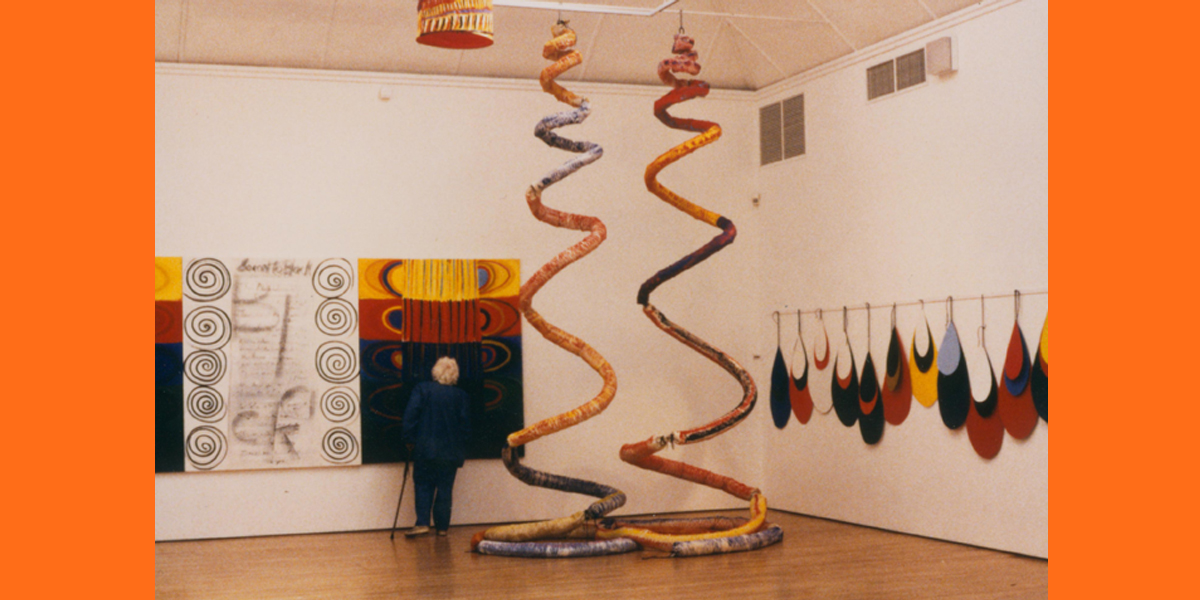
Barns-Graham at a Terry Frost exhibition, Newlyn Art Gallery, 1995
Cornish Selection
The first section of this collection that is fully catalogued consists of items related to exhibitions in Cornwall. Over 380 of the items relate to solo exhibitions by artists for whom Cornwall played an important part in their lives and artistic practice. Another 170 items are about group exhibitions and festivals in Cornish galleries and museums. While combined these only make up about one seventh of the entire collection of exhibition flyers, catalogues, and Private View invitations, they are the most interesting part of it when investigating Willie’s engagement with her local peers and galleries. Though the items relate to over 100 different artists and 135 exhibition venues, a look at two summary graphs shows that the representation of artists and galleries matches expectations based on the most famous Cornish venues and artists. Many of those in the group of best-known Cornish artists are also amongst those who Willie at one time or another had personal connections and friendships with, such as Terry Frost, Margaret Mellis, Denis Mitchell and multiple generations of Nicholsons, providing an additional reason for her to have received and kept materials relating to their exhibitions.
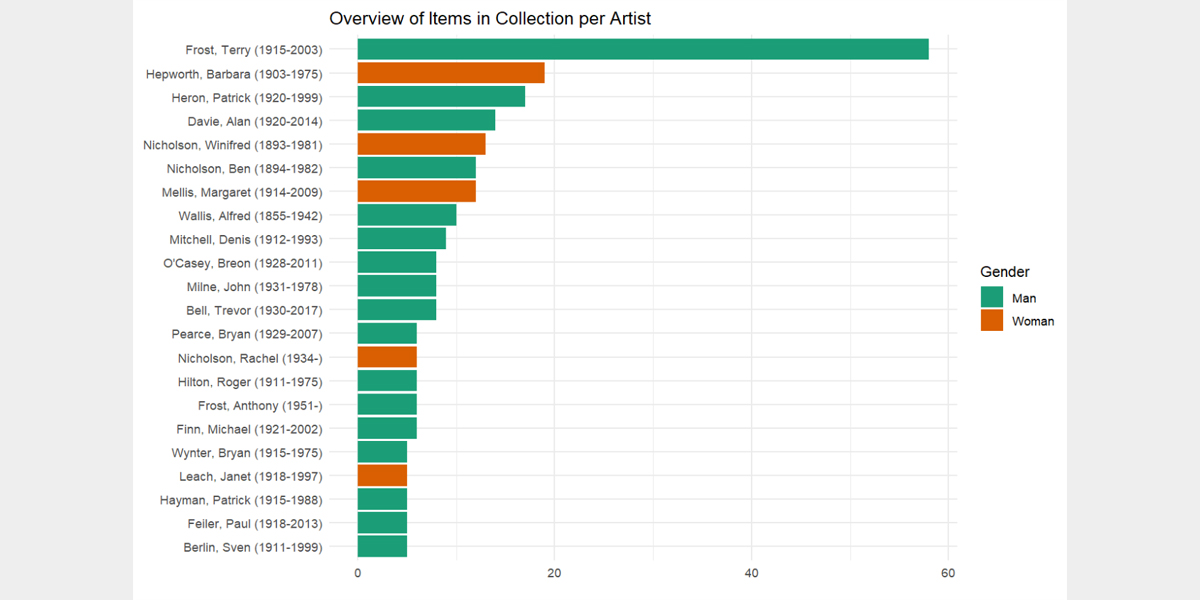
A chart showing the distribution of Cornish artists in the ephemera collection
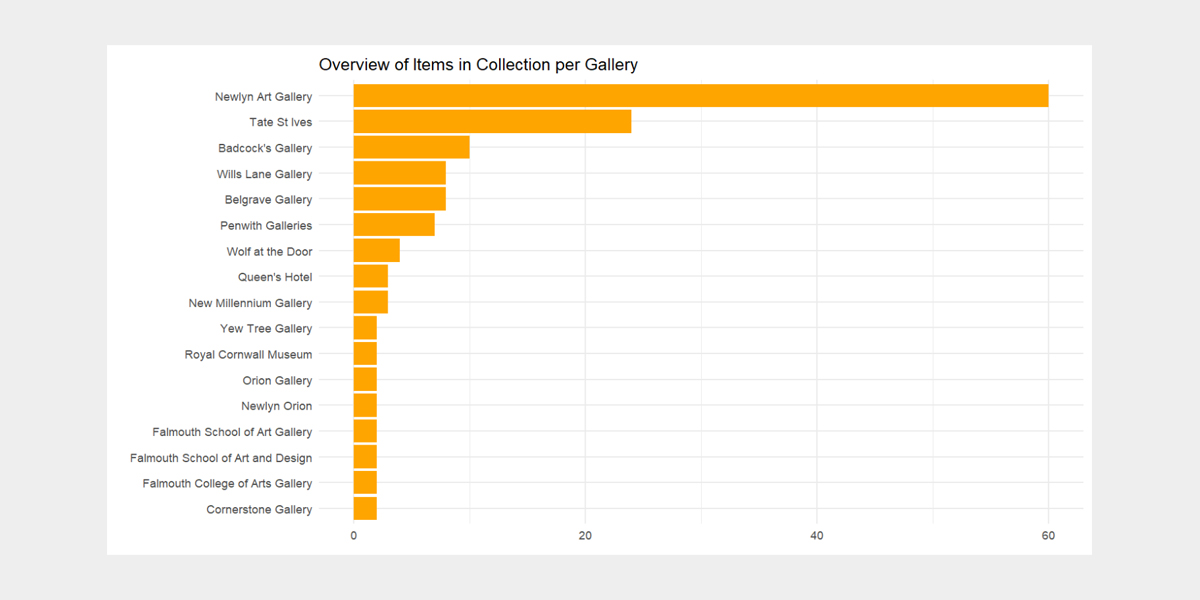
A chart showing the distribution of Cornish galleries in the ephemera collection
Old and New Friends: Exhibitions as Social Gatherings
These personal connections between Willie and her fellow artists are not just evident through the amount of exhibition Private View invitations or catalogues she collected from them but also through the various notes, greetings, and annotations that can be found throughout the items. While many of the invitations and flyers would have been sent to Willie by galleries because as an artist herself, she would have been on their lists of invitees, a sizable amount of the invitations include personal messages to Willie from the artists themselves, such as from Denis Mitchell in the catalogue below. The social dimension that attending other artists’ exhibitions and Private Views had for Willie becomes even clearer when cross-referencing items from this collection with Willie’s diary entries in which she often recorded short summaries not just of her impressions of the exhibited art works, but also the other attendees and her interactions with them. Following an exhibition opening for a Denis Mitchell and Tom Early exhibition at the Penwith Gallery in 1996, she writes:
“…packed exhibition + very badly hung + congested. For first time seen large Tom Early’s but prefer the smaller, amongst all this are 2 small beauties. Johnny Wells who turned up talked of bringing one of those to “give to the Tate Gallery” – nice to see him & many others like Bryan Illsley turned up who gave me warm hug, I was wearing his necklace I bought & liked so much…”
Sunday 3 November, 1996 day per page diary, WBG/4/1/61
These interactions are often with old friends and colleagues, who she is sometimes more and sometimes less delighted to see, but also include new acquaintances both professional and personal. These new contacts in particular are not only referenced in the diaries but also visible in this collection, which holds a number of examples of contact details of people Willie met scribbled down on the back of an exhibition catalogue in the midst of an exhibition opening (see example below).
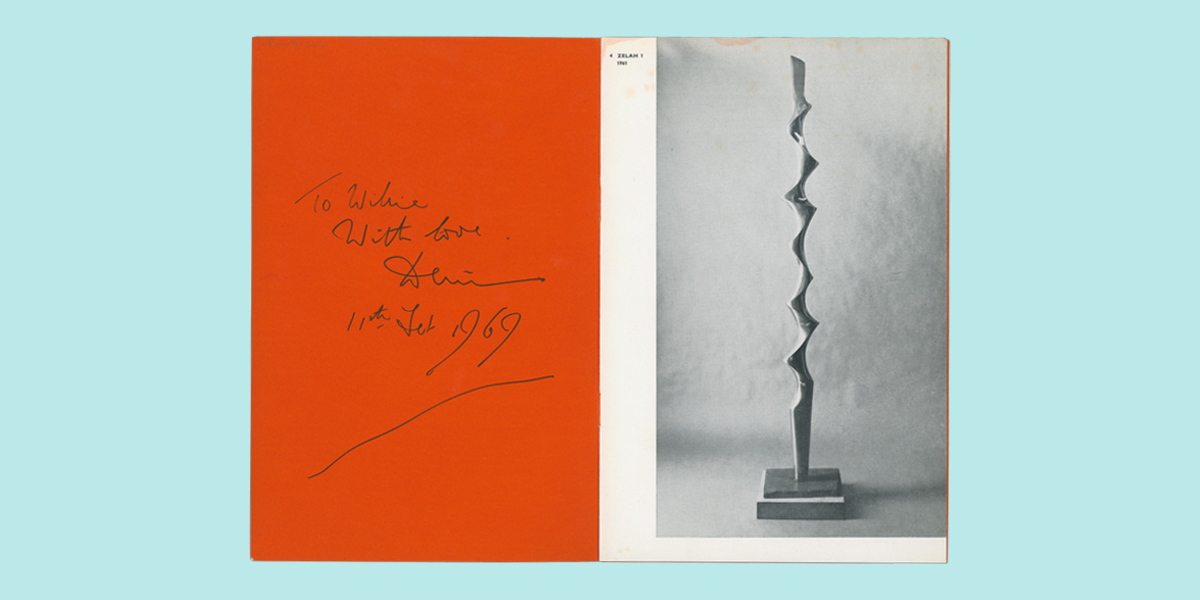
An inscription from Denis Mitchell to Barns-Graham in the inside cover of one of his exhibition catalogues. It reads: To Willie with love Denis 11 Feb 1969
Cornwall’s Artists Community
Not just Willie’s social life in the art scene can be traced through this collection, it also provides insights into the tightly knit artistic community in Cornwall overall. This community was built across various artistic styles, as well as divisions of medium, with many of the group exhibitions bringing together painting, sculpture, and pottery (a configuration going back to the best-known St Ives artists, which with Bernard Leach, Ben Nicholson, and Barbara Hepworth included a potter, a painter, and a sculptor). This by no means implies that there were no perceived or real enforced hierarchies between mediums or styles but that they coexisted within the same exhibition venues and artistic communities. Overlaps between different artists and their roles are also evident in the many essays, introductions, and notes that can be found in the exhibition catalogues of this collection, which often include artists writing texts for their friends and colleagues, endorsing and supporting each other, while simultaneously co-creating a narrative of their art and its history and ties to Cornwall.
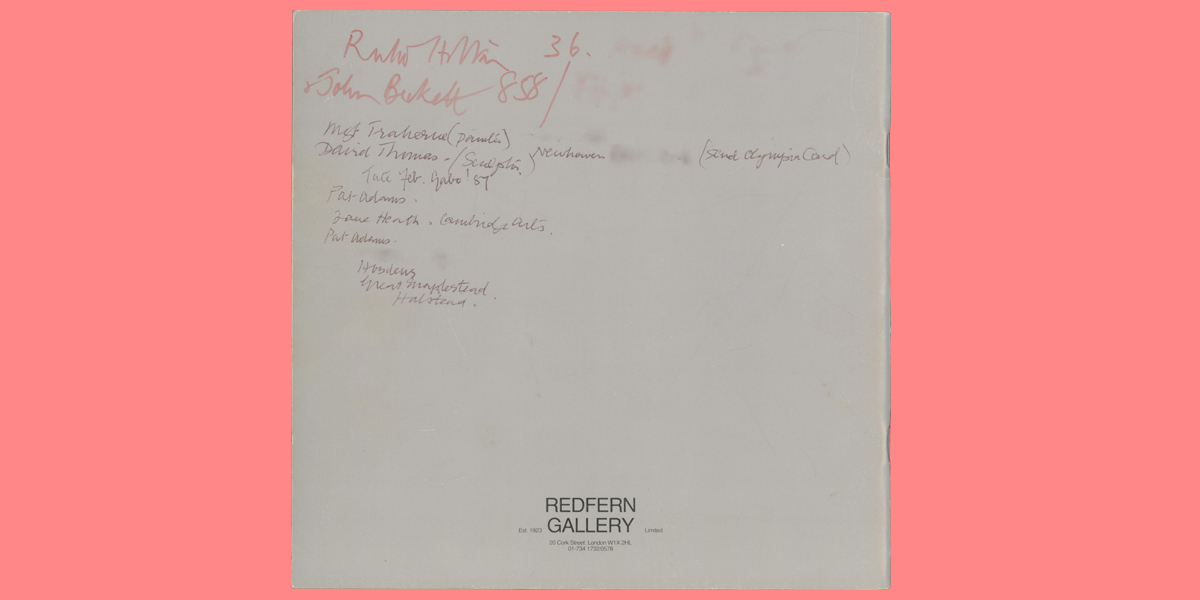
Contact details handwritten on the back of a Francis Davison catalogue. Some contact details have been blurred.
Exhibition Culture in Cornwall Through the Decades
Another point of entry when using this collection for research on Cornish art history are the relationships between artists and galleries, as well as galleries’ histories that are represented in it. Both the solo and group exhibition sections of this Cornish part of the collection can be used to investigate artists’ relationships with different galleries, mapping out their representation through local galleries over decades, as well as their rare or regular opportunities to show work at London-based venues. Additionally, the part of the collection focussed on group exhibitions from the 1960s onwards draws a picture of the Cornish exhibition scene. In the case of Tate St Ives, its history is represented in the collection from a flyer pre-dating its opening and laying out the plans for the project, a Private View invitation to its opening in 1993, to its fifth annual display in 1998, its special programme marking the 1999 solar eclipse and regular updates on its programmes and exhibitions into the early 2000s.
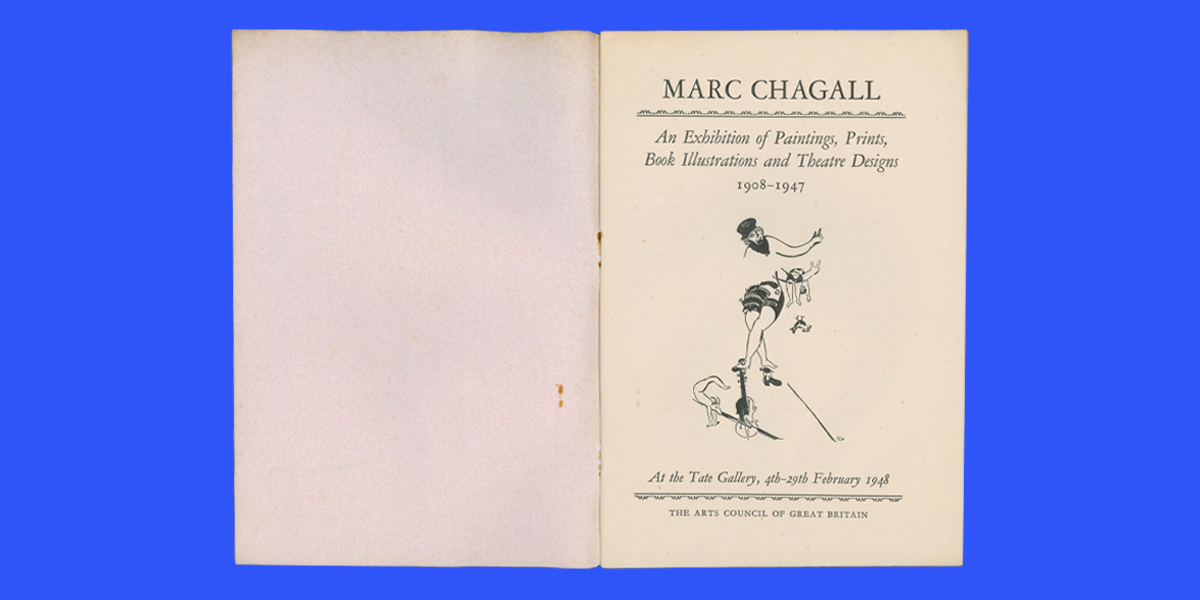
A Marc Chaghall exhibition catalogue from Tate 1948
Only the Beginning
As stated above the currently catalogued part of Willie’s collection of flyers, catalogues, and Private View invitations related to Cornwall covers only a small part of the whole collection. Still, it already constitutes a rich source of research materials related to her own habits of exhibition visits and relationships, as well as the Cornish art scene as a whole. There are many treasures still buried in the folders of material on group exhibitions in Scottish venues, London galleries, and international festivals and biennales, as well as solo exhibitions of established, rediscovered, and lesser known artists that Willie visited and was invited to attend from her early student days in the early 1930s until her death in 2004.
The potential of this collection is only slowly being uncovered and once fully catalogued will provide a valuable resource for those with a general interest or specific research questions on Willie and the Cornish and European Art History of the 20th century.
